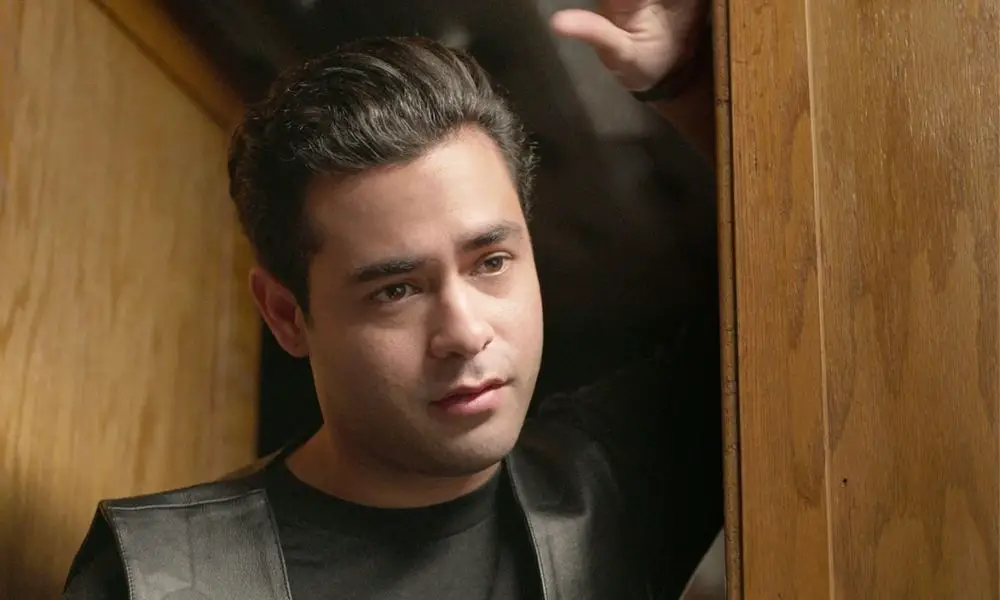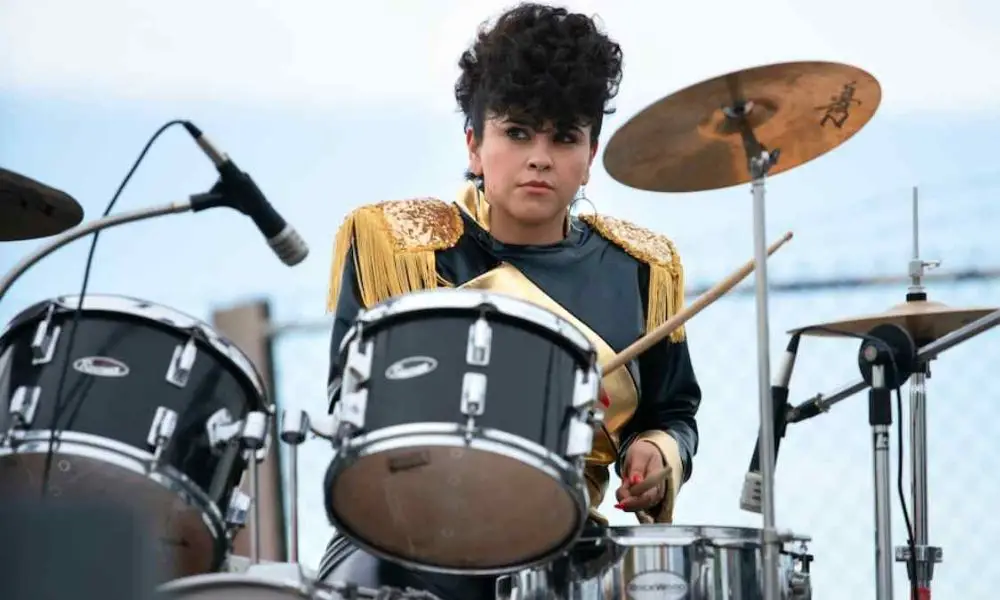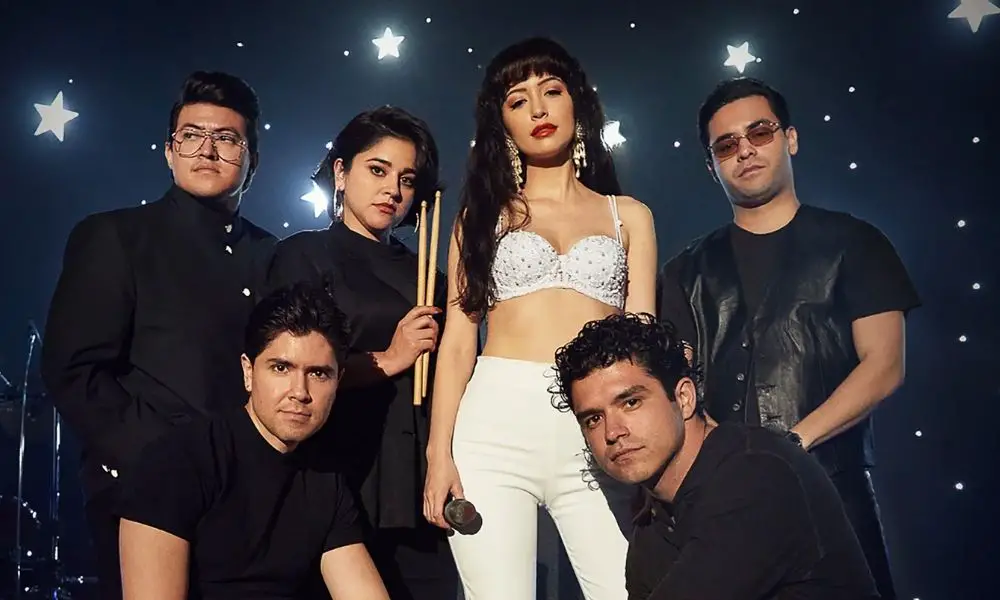Selena Quintanilla-Pérez is an icon. She broke into Tejano music and later took the genre beyond the borders and into Mexico. Had she lived, she would have been huge, without a doubt. Sadly, Selena was murdered in 1995 by a business associate. Since then, there have been tributes, documentaries, homages and, famously, in a 1997 movie starring Jennifer López.
Now, Netflix brings us Selena: The Series, a dramatization of her life starting from childhood. The series depicts the slow, grinding road to fame of the singer alongside her family. It was created by Moisés Zamora and includes Selena’s sister Suzette and her father Abraham Quintanilla in executive producing credits.
The series is enjoyable episode by episode. It is lighthearted (so far), with feel-good moments and of course, great music. There is a big problem, though. Selena: The Series is severely lacking in one key ingredient: Selena.
Casting of Selena
The show got off on a wrong foot as people had mixed reactions to the casting of Christian Serratos (of The Walking Dead fame) as the Tejano icon, on account of a lack of physical resemblance. I think comparisons to the 1997 film are counterproductive; it is worth noting that people heavily protested the casting of Jennifer Lopez, not just because she is Puerto Rican-American and not Mexican-American, but also because people thought she didn’t look like Selena.
Both Suzette and AB, Selena’s brother, have come out in defense of the casting. Now it is my turn: I believe Christian Serratos does a good job in the role with what she is given.
An actor does not necessarily have to physically resemble the real-life figure they are portraying. Christan Serratos shines in the moments where Selena is funny and warm, intimate moments. Like when she is trying to practice her Spanish by watching telenovelas and takes to speaking like a soapy heroine. So much of the character Selena could have been shines through in scenes like that. The problem is Serratos does not get that much to work with.
Selena is often the background character in her own show, while other characters carry the conflict of the scene. As a result, people have taken to judging her performance solely on her imitation of well-known moments like concerts. I agree performances are important, and the show does come short in that respect. However, the most prominent way the show does Selena wrong is not that, but in stripping her of agency, complexity, and nuance. She is not the protagonist of her own story.
Selena does have convictions and desires—like singing in English and wearing her own clothes in promotional material—but when it is time to fight those battles, the show gives them to her father, Abraham (Ricardo Chavira), instead of her.
She meets Chris Pérez (Jesse Posey) late in the season, and it looks like she might finally get a conflict that will give her agency. It is an improvement, to a certain degree, but she does not get enough screen time to develop it. Instead of seeing them fall in love, the show decides to skip over their actual relationship and dive right into their decision-making moments. Posey’s Chris is neither here nor there. We do not get to see enough of him to get invested or dislike him.
The Rest of the Cast
There are standout performances. Gabriel Chavarria (The Purge TV Series) really shines as A.B. Quintanilla. He does not steal as much as he is given the show. He struggles with writing songs with pressure from both his father and the label. Later, he navigates having a family and being on the road.

Chavira’s Abraham is another one to note. He displays conviction and vulnerability throughout even though the character does not come off in the best light, especially by the end of the show. He and A.B. get most of the point of view scenes and by far the most screen time. Abraham drives the story forward, while both share the most conflict of the show, including within themselves.
At the risk of some rolled eyes here: making two men the center of a series meant to be about an iconic woman who broke into the Tejano music scene? Not the greatest of looks. Of course, Selena did not do it alone, and her father and brother played probably the biggest roles in her success behind the scenes. But still.
Other important roles include Selena’s mother Marcella (Seidy Lopez), her sister and drummer Suzette (Noemi Gonzalez), keyboardist Ricky Vela (Hunter Reese Peña), backup vocalist Pete Astudillo (Julio Macias), and of course, Selena’s husband Chris Perez (Jesse Posey).
Suzette and Ricky are standout characters for me. Both Gonzalez and Peña give their characters so much heart that it is hard not to love them, even when they are on screen briefly. My favorite moment in the entire first season belongs to Suzette, early in the series. Gonzalez uses every moment she is on screen. She even milks the tiny moments we see her behind the drums, personality shining through.

Other Aspects
Much has been said about the lip-syncing scenes, which are often off. My semi-hot take about this is that I do not care that much. If I wanted to watch Selena performances I would go to YouTube. There is no one who would come close to her, anyway. Still, I recognize their importance. While it is true Serratos is not the strongest at it, sometimes I feel like the directing and editing choices have something to do with it.
The editing of some concert scenes for example, will cut to someone in the background with Selena blurred in the forefront clearly at a completely different point of the performance. I confess I am not a connoisseur when it comes to sound editing, but I feel like sometimes the tracks sound too clean, and that does not help either.
The direction and editing is otherwise clear. The action is also always clear, the pacing consistent. There are some truly sweet and comedic moments that really land well. Though there are some awkward moments in terms of editing and directing in non-performance scenes as well. Sometimes scenes will linger for a tad too long, or they start at awkward moments. There are several instances of one of the other characters asking Selena if she is okay as soon as the scene cut to them, before we or even the characters see her face. A couple of seconds on her upset face would have made a world of difference. To be fair, these are few and far between.
The costume and hair department did well with the notable exception of Selena’s 90s wig. In general, costuming and hair do a good job bringing back the different eras the series moves through, along with the art department. The latter is the one that probably deserves the most praise for not only recreating iconic places and moments, but the attention to detail in the backgrounds of the scenes. Every time the characters’ style changes, it signals the beginning of another stage in the story.

A Rose-Tinted Memory
The series creator, Moisés Zamora, penned the first two episodes of the series, and the primary writing credit then goes to a team of eight other writers. Overlooking the Selena of it all, the series has solid writing.
The pacing of the overall story flows pleasantly. The show does cold opens before the opening credits that often include semi-disconnected scenes that serve to give the characters color. There are instances of heavy-handedness with the overall message of the episode here and there. For example, the show likens A.B.’s obsessive cleaning of his daughter’s bottles to his fixation with making everything perfect for the band’s next step. They even layer his reluctance to change diapers because it is “messy” on top of that. Though obvious, it doesn’t grate, and it matches the general tone of the show, which is a feel-good drama.
There is generally a rose-tinted glass feeling to the entire thing. The stakes never seem high, not only because we know the outcome, but because the tension often does not last long. There is nothing wrong with this, per se. I don’t think I would have been up to watch a “Dark” take on Selena, especially this year. The issue is who gets in on the conflict. Which leads me to the point of Selena.
Writing Selena
One of the main talking points in many interviews is how the show has so much more time to tell Selena’s story, show how much of a struggle it was despite the outward appearance of overnight success. It is strange to me, then, that it chose not to. The story features the family, and particularly the two men, most heavily.
There is nothing wrong with including Selena’s family, they are part of her story. The problem is keeping her voice—proverbial, not literal—out of it. She is watered down to the point where you could probably learn more about Selena by watching her old interviews than by watching the show.
There are several reasons why this might have happened. Certainly, the fact that Suzette and Abraham Quintanilla are involved could have come into play. I do not mean they intentionally made it so, but their presence and the need for their approval in the content of the series might have inadvertently affected the portrayal of Selena.
First, the show suffered from “this is how it happened”-itis. Whenever real-life events are depicted on screen, creators run the risk of fixating on being true to the real-life events as they happened. Depicting a real-life event as an entertaining drama necessitates creative license.
So far in this article I have referred to Selena as a character twice. I do this because in the show, she should have been treated as a character. Television storytelling needs drama and conflict, so real-life events often need to be altered, blended, or spiced up to create it.
Perhaps in trying to stick to how it happened, they missed the mark. For example, with the struggle for control of her image and the language she sings in, she should have been the one fighting for her convictions, even if Abraham was the one who did it in real life.
There is another aspect which I think is important. To make Selena a multi-dimensional character with all that entails – conflict, flaws – there had to be creative license to imagine her private moments, her inner turmoil, her feelings. Yet there is an obvious hesitance to get in that deep with her. The writers held back from Selena. Whether they were explicitly made to or psyched themselves into it given the involvement of the family, is unclear.
Thinking back on the show, I do not recall many scenes where Selena is alone, even. She shares most scenes with Suzette and Abraham. Since she is a background character in most conflict scenes, she in a way seen through the eyes of others. Effectively, she is remembered, not depicted.
The Quintanillas have been famously protective—even zealous—of Selena’s legacy. And who can blame them? As much as they are public figures, they are not infamous for horrid acts, they are not political or diplomatic figures (they are not, say, the British Royal Family). They are a family who lost their youngest sister and daughter in a traumatic, unjust way. I am not about to sit here and opine about what they should and should not have done, and how they ought to handle Selena’s image.
I do not presume to know why or how it came to be that Selena was written the way she was, this is all just speculation on my part. It does seem that, in trying to protect her from all sides, she was pushed to the edge of her own story, which is a shame.
Despite this seeming like a very “ranty” review, I enjoyed watching Selena: The Series. It is a decent watch: entertaining and feel-good, with plenty of charming characters. It is a good ensemble in general, the acting is good. Very importantly, it does capture some significant aspects of the experience of the Mexican-American family in the 80s and 90s. That being said, The Quintanillas would have made more sense as a title for the show.
Despite everything I just said, even with Selena, I was not unmoved by some of her moments in the series. I might be biased by the fact that I cannot even think about Selena for more than two minutes without weeping. I am hoping that part 2 brings us more of her point of view. The second part comes out some time in 2021.
Images Courtesy of Netflix
Have strong thoughts about this piece you need to share? Or maybe there’s something else on your mind you’re wanting to talk about with fellow Fandomentals? Head on over to our Community server to join in the conversation!

